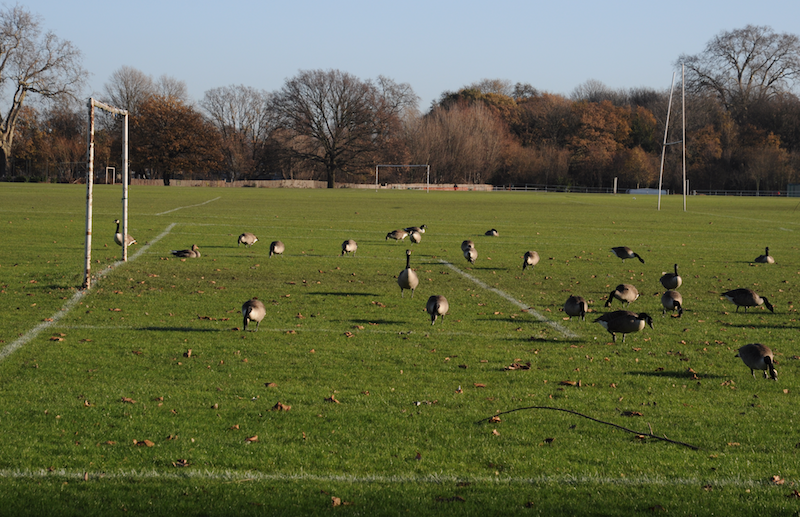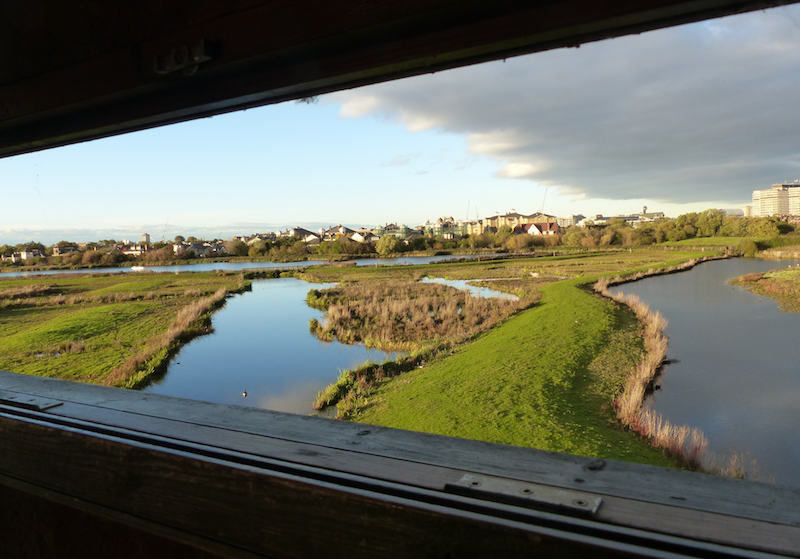Average Birding

Posted at 10:13 on December 18, 2019
Barnes WWT
A WWT reserve in TfL Zone 2. That can't possibly work, can it? Surprisingly, it can.
Getting there
Please note: At pixel time, Hammersmith Bridge is closed to all traffic, so don't try to access the site from Hammersmith tube - go via Barnes National Rail!
Public transport options are pretty good - either get National Rail to Barnes and then a short bus trip (or ten-minute walk) or tube to Hammersmith and grab a bus (slightly longer, walk probably less pointful) from there.
There is good access from the Thames path if you're on a bike coming from the East.

If you're in the same quadrant of London as the reserve (i.e South West) driving isn't totally insane and there is a sizeable car park.
How to do it
If you prefer, this whole section is available as a custom google map
Like all WWT reserves, Barnes is well marketed and well visited - be prepared to share the reserve with a wide range of birding enthusiasm levels, from serious scope spotters to occasional hordes of children attempting but failing to be quiet (it's just too exciting).
One upside to Barnes' urban location is that it is very well birded; it seems to be blessed with some extremely patient folk, I suspect not least because its two signature rarities (Bittern and Jack Snipe) often require a bit of hard work to find.
Before you continue - open the official map; it has some names I'm going to rely on.
If you want any hope at all of piece and quiet and you're visiting on a weekend, be at Barnes when it opens. Visit the sightings board in the courtyard to catch up with the latest news, and have a quick look out from the observatory's giant glass frontage - I've been lucky enough to waltz straight on to a Bittern in there before.
A quick Bittern side note
I'm going to go out on a limb here and say that this is probably the most reliable place in the UK to see Bittern in the Winter. The site is small, well birded, well stocked (reports of up to five Bitterns in a single day) and well reported, so if there is a Bittern:
- Someone will spot it
- It'll usually be reported (Check WWT London Twitter)
- You should be able to get to where it's been seen before it disappears
To maximise your chances of a decent view:
- Time your visit to intersect with a cold, clear, dry, still day in winter
- Keep an eye out for bittern news
- Don't be ashamed of bailing half way across the reserve to get on it
Enough Bittern; let's go for an explore.
Part one: the North side - Headley and Wildside hides
Once you've convinced yourself the view from the observatory is free of further interest (or the annoying lack of focus the windows cause get the better of you), I would head out towards the Headley hide.
On the way, keep your eyes open; the hedgerow separating the collection from the reserve proper often holds a Reed Bunting or a Cetti's Warbler.
Headley should be a relatively quick stop, unless it's a freezing cold day, in which case you may find it's warmth rather tricky to leave. Scan the reedbed in front carefully; it could have Bittern or Water Rail hiding within it, or a Cetti's Warbler (to the left of the hide, usually) if Spring has sprung. I've seen Stock Dove and Green Woodpecker meandering around on the grassy peninsula that extends from the right side of the hide, so give that a concerted staring at too. Once you get bored enough to start looking at gulls, it's probably time to move on.
Take whatever route you like to the Wildside hide. In Spring and Summer you should have a pleasant accompaniment of warbler background; in colder months, you might get something interesting amidst the tit flocks.

My experience of the Wildside hide varies wildly. In Autumn and Winter, I mostly visit for completeness - there might be a Pintail or two at the far end of the reservoir pond. Sometimes a vagrant (Ring-necked duck, or duck that must not be named) turns up here. More likely there will not be very much at all; perhaps a goose or a gull on the sad little mud island immediately in front of the hide.
In Spring and Summer, however, Wildside offers the best view of the two grassy edges (and fencing) of the grazing marsh. Pipits (meadow, water, some occasional claims of more exciting varieties), wagtails (pied, grey and yellow), chats (stone and whin) and Wheatear should be carefully looked for. A Wryneck famously paid a visit in 2019!
Head back to the centre when you're finished; strongly consider whether you need coffee, a snack, or a use of the facilities; I usually require at least one.
Part two: The East side
You should now be ready for the second half of the reserve. Both hides on the way to Peacock Tower are worth a visit; each allow some tricky part of the reedbed to be viewed; have a good check (take your time!) if you're looking for Bittern, and don't forget the reeds nearest the hide. If you get bored of staring at reeds, have a break and check the edges of the islands you can see for waders; Snipe is likely, as is Redshank.
If you reach Peacock Tower Bitternless, you're probably going to stay that way unless you hang around 'til dusk and catch one in flight. The Tower is much better for spying on the wader scrape and the grazing marsh; if there are interesting waders on the site they'll almost certainly be found from the Tower.

While you wait for something of interest to turn up, or for one of the professionals to find a Jack Snipe, two of the Tower's more fixed offerings may be on show. First, have a good look at Charing Cross Hospital; a pair of Peregrines nest on it, and frequently end up sitting on the railings on the side visible from the reserve. Secondly, in the warmer months, the Tower comes with Sand Martins - there's an obvious bank where they nest of the right hand side of the scrape.
A word on Jack Snipe, if you want to have a go. A scope and a lot of free time are highly recommended. The leftmost and largest island of the wader scrape has been where I've had luck in the past - carefully search any vegetation for signs of life; the edges of the thicker stuff tend to be good. Common Snipe may also give you a place to start. More dedicated folk than I have also found them by scouring the grazing marsh. Good luck!
In general, once I am tired of the Tower I am ready to go home - even if on a super quiet day all of the above has taken ninety minutes. If, at that point, it isn't freezing cold, consider taking the long way back via the rear of the sheltered lagoon; it's a pleasant walk, and often has plenty of littlies to keep one entertained. A good place to find the year's first Chiffchaff or Willow Warbler in the Spring.
Eat / Drink / Stay
You're in London - the options are limitless.
Nearby
The Thames crossing at Hammersmith can occasionally have an interesting gull or two. Barnes Common (you'll have gone through it if you got the train to Barnes and then a bus) looks like it ought to be alright, but the couple of occasions I've decided to walk through it yielded so little that I haven't tried since.